Embet

Embet is a phonetic alphabet invented by Erick Merchant
in January of 2006.
Consonants
An Embet consonant has two parts, which together describe
the consonant’s articulation. The head notes the consonant’s
place of articulation. The tail notes the consonant’s manner
of articulation.
Unvoiced consonants have white heads, while voiced consonants
have heads that are shaded gray.
The chart below shows a sampling of the Embet counterparts to
the symbols on the IPA pulmonic consonant chart.
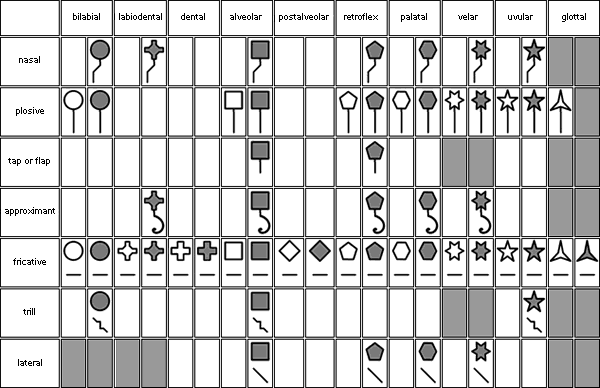
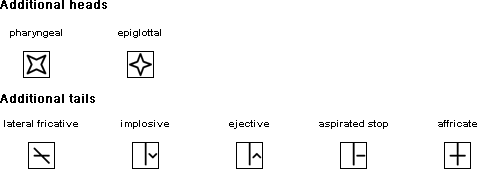
Syllabic consonants
Syllabic consonants use these heads.

Vowels
An Embet vowel consists of a head that notes its place of articulation.
If the vowel is rounded then the head is surrounded by a ring.
Not all Embet vowels have tails, but there is a tail to note the
quality of tense, which can be used to differentiate between two
vowels that would otherwise be represented by the same head.
The charts below show the nine vowel heads in unrounded and rounded
versions needed to make the Embet counterparts to most of the symbols
on the IPA vowel chart.
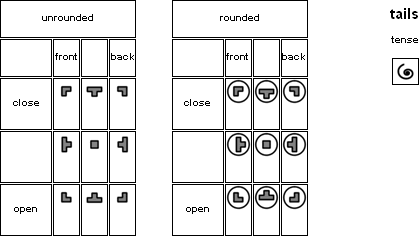
Stress
Stress is represented in Embet by making the syllabic letters of the
stressed syllable red.
Stressed syllabic consonants use these heads.

And the charts below show the nine stressed vowel heads in unrounded
and rounded versions.
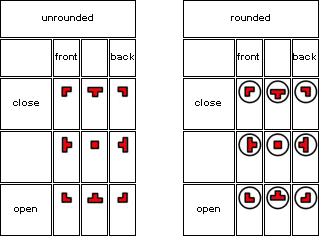
Sample text in Embet
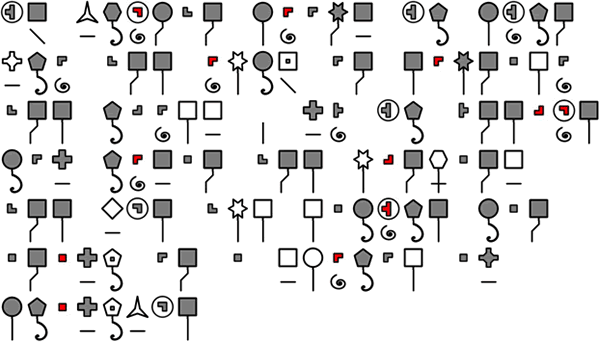
Translation
All human beings are born free and equal in dignity and rights. They
are endowed with reason and conscience and should act towards one another
in a spirit of brotherhood.
(Article 1 of the Universal Declaration of Human Rights)
